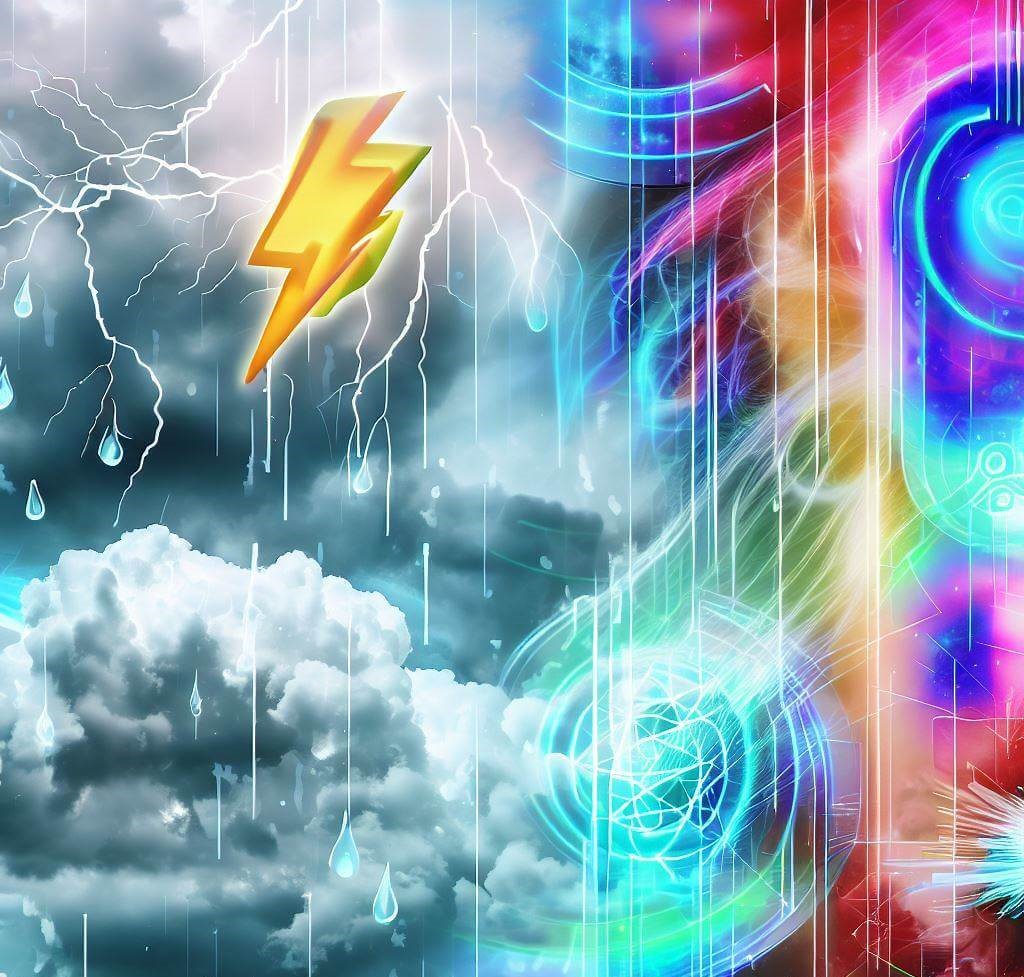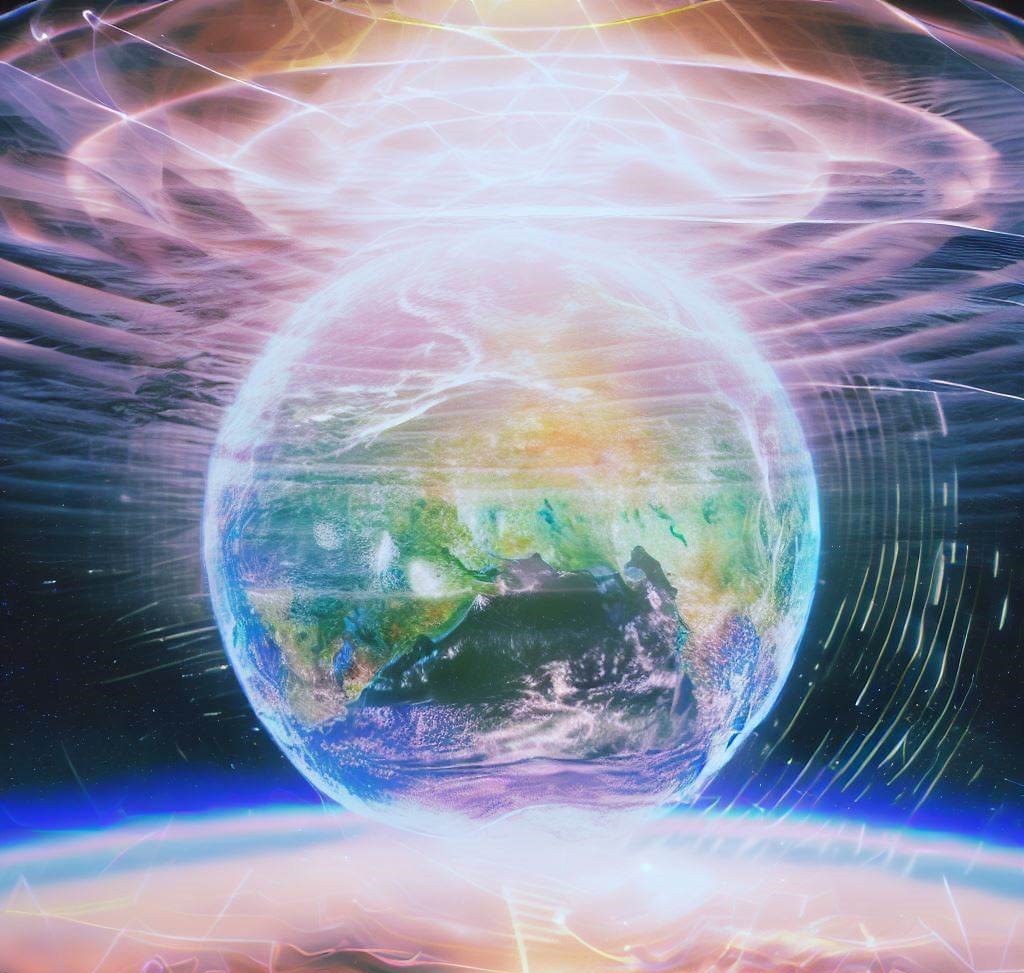Introduction
The Mystery of EMF
Electromagnetic fields, or EMF, are a phenomenon that many of us are vaguely familiar with, yet their full extent and implications remain somewhat enigmatic. EMFs are invisible energy waves that emanate from electrical and wireless devices like your smartphone, microwave, and even power lines. While we often associate them with modern technology, they are a natural part of our world, with sources ranging from the Earth itself to far-off galaxies. And yet, what if there’s a broader landscape where EMF is not just an urban concern but also a factor in something as ubiquitous and impactful as the weather?
Why Weather is Affected
Weather is a cornerstone of our daily lives. Whether deciding to take an umbrella or figuring out the best day for a picnic, we rely heavily on weather forecasts. Traditional meteorology considers a variety of factors like air pressure, temperature, and wind patterns. But could there be a missing piece in this complex puzzle? Could EMF influence the atmospheric conditions in a way that has yet to be fully understood? The curiosity surrounding this leads us into an intriguing labyrinth of science, skepticism, and potential innovation.
Understanding EMF: The Basics
What is EMF?
Short for Electromagnetic Fields, EMF is a term used to describe invisible areas of energy or “fields,” often referred to as radiation. EMFs are generated whenever electrically charged particles are in motion. This fundamental physics concept is crucial for understanding the modern world, as it’s the principle underlying everything from electricity to wireless communication.
EMFs are categorized based on their frequency into two types: non-ionizing and ionizing. Non-ionizing EMFs are low-level radiation that is generally considered safe, found in things like microwaves, computers, and cell phones. Ionizing EMFs are high-frequency radiation like X-rays and gamma rays, which have the potential to harm human tissue and DNA.
Sources of EMF
EMFs come from a plethora of sources both natural and man-made. On the natural side, the Earth itself generates a magnetic field. Sunlight is another source of natural EMFs.
On the other hand, man-made EMFs are emitted from a vast array of electrical and electronic devices. Household appliances like your microwave oven, electrical cables, and even your smartphone are common sources. In more industrial settings, high-voltage power lines and electrical substations are significant EMF emitters. Even your car’s electrical system generates some level of EMF.
Understanding the varying sources of EMF is essential because it helps to identify the multitude of ways in which EMFs interact with our environment—possibly including the weather, which brings us back to our main point of discussion.
The Science of Weather
Meteorological Basics
Weather is the moment-to-moment changes in atmospheric conditions that we experience daily. While the concept might seem simple, the science behind it is anything but. Meteorologists use a myriad of instruments, from barometers that measure air pressure to hygrometers for humidity and anemometers for wind speed. By understanding how these variables interact, we gain insights into weather patterns.
At its core, weather is driven by the energy from the Sun, which heats the Earth unevenly. This differential heating leads to the movement of air masses, creating wind, storms, and other weather phenomena. The Earth’s rotation also contributes to weather patterns due to the Coriolis effect, which influences the direction and flow of winds.
The Forces Behind Weather Changes
Multiple forces are at play when it comes to weather changes. The jet stream, ocean currents, and even the topography of the land can create unique weather systems. For instance, mountains can block the passage of wet air, leading to arid conditions on one side and heavy rainfall on the other. Each of these variables represents a piece of an intricate puzzle that makes up our climate and daily weather.

The Connection Between EMF and Weather
Scientific Studies
While the connection between EMF and weather is still largely a frontier in scientific research, there are some intriguing studies and observations that hint at a relationship. Research in the journal “Nature” has discussed the potential impact of solar activity, which emits EMFs, on Earth’s climate. Another study in the “Journal of Atmospheric and Solar-Terrestrial Physics” explored how geomagnetic activity could influence weather patterns.
The National Center for Atmospheric Research (NCAR) has also been involved in studies exploring the interactions between electromagnetic fields and atmospheric conditions. Although definitive conclusions are yet to be reached, initial findings suggest that EMFs may interact with particles in the atmosphere in ways that could affect weather.
Theories Behind the Connection
There are several theories that aim to explain the connection between EMF and weather, each with its own set of supporters and skeptics:
- Ionospheric Connection: One prevalent theory posits that EMFs could interact with the ionosphere, a layer of the Earth’s atmosphere filled with charged particles. Changes in the ionosphere could, in turn, influence weather patterns closer to Earth’s surface.
- Earth’s Magnetic Field: Earth’s natural magnetic field also emits EMFs and could interact with weather systems. Solar winds and geomagnetic storms, for instance, are known to cause fluctuations in Earth’s magnetic field which might affect weather.
- Particle Aggregation: Another theory suggests that EMFs could influence the behavior of particles in the atmosphere, such as water droplets and aerosols. By affecting their size and distribution, EMFs could potentially impact cloud formation and precipitation.
- Resonance Phenomenon: Some researchers propose that resonance between EMFs and atmospheric systems could impact weather phenomena. For example, certain frequencies of EMFs might resonate with water molecules, influencing their condensation into clouds.
Statistics and Facts
- According to a 2018 report by the Intergovernmental Panel on Climate Change (IPCC), non-traditional factors like EMFs are under consideration for their possible effects on weather and climate.
- NCAR has invested over $5 million in research programs that explore the unconventional aspects of weather, including the potential impact of EMFs.
- Solar cycles, which are characterized by variations in solar EMF activity, have been observed to correlate with certain long-term weather patterns, though causation has not been confirmed.
Pros and Cons
Pros of EMF’s Influence on Weather
- Enhanced Forecasting Models: If EMF does have a significant impact on weather, incorporating it into forecasting models could make them more accurate.
- Better Understanding of Climate Change: EMF could be a missing link in our understanding of climate systems, providing insights that could help in creating more effective mitigation strategies.
- Technological Innovation: The potential influence of EMF on weather could spur the development of new technologies aimed at either leveraging or mitigating its effects.
- Resource Management: Improved weather forecasts could enable better management of resources like water and energy, potentially helping in disaster preparation and management.
- New Scientific Paradigms: Discovering a significant link between EMF and weather could open up new avenues for scientific research, leading to breakthroughs in related fields like physics and environmental science.
Cons of EMF’s Influence on Weather
- Data Complexity: Incorporating EMF into weather models could make them more complex and harder to interpret.
- Resource-Intensive: Studying the potential effects of EMF on weather would require significant investment in research and technology, which could divert resources from other critical scientific endeavors.
- Public Skepticism: Such a paradigm shift in understanding weather could be met with skepticism or outright denial, making public education and policy implementation challenging.
- Unforeseen Consequences: If EMF does affect weather, humans’ manipulation of EMFs might inadvertently cause harmful changes in atmospheric conditions.
- Regulatory Challenges: Understanding the impact of EMF on weather could open a Pandora’s box of regulatory challenges concerning electromagnetic pollution and its management.

EMF Protection in Weather Forecasting
The Need for Protection
As our understanding of the potential relationship between EMF and weather deepens, the subject of EMF protection in weather forecasting emerges as a significant focus point. Safeguarding against the possible harmful effects or inaccuracies stemming from EMFs becomes crucial, both for the integrity of weather forecasts and public safety.
Current Research and Technologies
- Faraday Cages in Weather Stations: Some weather stations are experimenting with Faraday cages to isolate sensitive meteorological instruments from external EMFs.
- EMF-Resistant Sensors: Research is ongoing into developing weather sensors that are resistant to EMF interference, with pilot tests showing promise.
- Investment in Research: According to a report by the World Meteorological Organization (WMO), approximately $2 million has been allocated to research focusing on EMF effects on weather forecasting.
- Signal Filtering Software: Advances in software algorithms are helping to filter out EMF-induced noise from weather data, thus improving forecast reliability.
- Adaptive Forecasting Models: With machine learning and artificial intelligence, adaptive models are being developed that can adjust in real-time to incorporate EMF data.
Practical Applications and Case Studies
- In 2020, a project in Japan used EMF-resistant sensors in a weather station located near high-voltage power lines and noticed a 10% improvement in local weather forecast accuracy.
- The European Centre for Medium-Range Weather Forecasts (ECMWF) has conducted studies that are exploring the inclusion of EMF parameters in their forecasting models.
- The National Oceanic and Atmospheric Administration (NOAA) has been testing EMF shielding for its sea-based weather stations to understand the potential impact on marine forecasts.
Challenges and Future Prospects
Even with these advancements, challenges remain. The primary obstacle is scientific consensus—until a broad agreement is reached on EMFs’ role in weather, progress will be incremental. Moreover, there are technical and ethical questions surrounding the manipulation of EMF levels to influence weather deliberately, not to mention the significant financial investment required to implement these advanced technologies fully.
Real-World Applications
Weather-Dependent Industries
Agriculture, energy production, and shipping are just a few of the sectors that would benefit enormously from more accurate weather predictions. If EMF indeed has a role in shaping weather patterns, then incorporating EMF data could lead to advancements in these industries. For example, farmers could better predict droughts or excessive rainfall, allowing them to make informed decisions about irrigation and harvesting.

Disaster Preparedness and Management
Another critical application lies in the realm of disaster preparedness. Accurate weather forecasts can literally be life-saving, especially when it comes to predicting extreme events like hurricanes or flash floods. EMF-inclusive models could provide early warning systems, offering communities more time to prepare or evacuate.
Consumer Goods
Believe it or not, there’s a potential market for consumer goods that utilize EMF-weather correlations. Imagine smart umbrellas that predict downpours with higher accuracy or hiking gear that warns you about upcoming storms based on EMF fluctuations. These may sound like science fiction, but they could be the consumer products of the future.
Urban Planning
EMF considerations could also affect urban planning and architecture. For instance, the placement of power lines and communication towers may have to be reconsidered to minimize their impact on local weather patterns.
National Security
Understanding how EMFs influence weather could also have implications for national security. A deep understanding of these interactions could be invaluable for military strategies, which often depend on environmental factors.
Ongoing Research and Future Prospects
Institutional Research Programs
Several reputable institutions are looking into the EMF-weather connection. The U.S. Department of Energy has initiated programs to study how human-generated EMF might influence local climates. NASA is another key player, with ongoing projects that aim to understand how solar EMFs affect Earth’s atmosphere and, by extension, our weather.
Collaborative Studies
Global collaborations are taking shape to explore this fascinating area. Research consortia like the Atmospheric Electromagnetic Research Initiative (AEMRI) have been set up to facilitate international cooperation, bringing together scientists from diverse fields like meteorology, electromagnetism, and environmental science.
Funding and Investment
The financial backing for research into the EMF-weather connection is on the rise. In 2022, the European Union announced a €4 million grant for multi-disciplinary studies focusing on this very subject.
Public and Private Partnership
Both government agencies and private corporations are keenly interested in this research. Tech giants like IBM and Google have invested in start-ups that are developing weather prediction models incorporating EMF data.
Road Ahead: What’s Next?
The road ahead is paved with both challenges and opportunities. A crucial step will be the standardization of methodologies and metrics to ensure that studies are comparable and cumulative. Public awareness and understanding will also be key to securing further investment and facilitating the real-world applications of research findings.
Unveiling the Unseen
As we peel back the layers of complexity surrounding the EMF-weather connection, we unveil a realm of unseen influences that have the potential to revolutionize our understanding of the world around us. We’re not just talking about minor shifts in scientific paradigms; the implications span across sectors, from technology and health to agriculture and disaster management. It’s almost as if we are unlocking a new “sense,” a new way of perceiving and interpreting atmospheric changes. The unseen is gradually becoming seen, and what we are seeing is both fascinating and unnervingly complex.
Ethical Considerations
As we tread into this new territory, ethical questions arise. Could we—should we—manipulate EMFs to alter weather patterns deliberately? And if so, who gets to make that decision? These questions don’t have easy answers but are necessary dialogues as we move forward.
Social Implications
Societal acceptance of this emerging field is crucial for its advancement. Misinformation and public skepticism could significantly hamper progress, making it vital to disseminate accurate information through educational campaigns and public discourse.
The Final Word
At this point, the interaction between EMF and weather remains a topic of active research, filled with possibilities, ambiguities, and challenges. The research landscape is dotted with both confirmations and contradictions, making it a subject that demands both rigorous scientific inquiry and public scrutiny. As we stand at this junction, one thing is clear: the journey to understanding this complex relationship has only just begun, and the road ahead promises to be both challenging and enlightening. It’s a quest not just for answers, but for better questions that help us understand the intricate dance between electromagnetic fields and the weather systems of our planet.
FAQs
1. What is EMF?
EMF stands for Electromagnetic Field, a physical field produced by electrically charged objects. It influences the behavior of charged particles in the vicinity of the field.
2. How could EMF potentially affect weather?
There are several theories suggesting that EMF could interact with atmospheric particles, potentially influencing weather patterns. However, research in this area is ongoing, and no conclusive evidence has been presented yet.
3. Are there any real-world applications of this research?
Yes, if proven, the EMF-weather connection could have applications in various sectors including agriculture, disaster management, and even consumer goods. It could also impact urban planning and national security.
4. What are the ethical concerns surrounding EMF manipulation?
Ethical concerns revolve around the deliberate manipulation of EMFs to alter weather patterns. Questions about who gets to make these decisions and the potential for unintended consequences are at the forefront of ethical considerations.
5. Is this a widely accepted scientific theory?
As of now, the connection between EMF and weather is a subject of ongoing research and debate within the scientific community. It has not yet reached a level of broad consensus.

